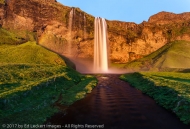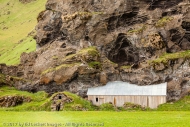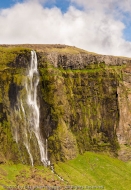


While I was running around the country on my latest photo shoot, I managed to get a Wi-Fi connection to see what was going on in the world, and I found that my “Lunar Eclipse and Aurora Borealis” image had won the “People’s Choice” award at the Darkroom Gallery where it was hanging. But there was a dark side to the news, too.
As I mentioned in an earlier post, Honorable Mention in Darkroom Gallery Contest!, I had recently won Honorable Mention in a monthly photo contest held at the Darkroom Gallery in Essex Junction, Vermont. An independent juror chooses the winner, several honorable mentions, and the rest of the images to be displayed in the gallery for a month. While the images are on display, visitors to the gallery get to vote for their favorite, and the image with the most votes receives the People’s Choice. Here’s the announcement I found on Facebook:
The voting was close, with nearly every photo garnering at least one vote, but Ed Leckert Images’s gorgeous and technically impressive image “Lunar Eclipse and Aurora Borealis” received the most votes from visitors to our Nocturne exhibition, and thus Ed receives the People’s Choice award! Ed made the trip from Washington to Vermont to be here for the Nocturne reception, so he’s a triple crown winner: Honorable Mention, People’s Choice, and the Long Distance Award at the reception. Many congratulations, Ed!
How cool is that! But wait. In the comments of the post I found this remark:
Conceptually and visually, it’s a neat idea. The Astronomer in me says no. I would like to know the technical information on this photo as it is an impossible shot. The moon never follows this path across the sky, nor did an eclipse happen when facing South during a NL storm.
Lovely. I’m being accused of faking the whole thing. That’s funny, because the juror for this show, Lance Keimig, is not a fan of manipulated images. In fact, the Juror’s Choice image, Atacama Hand, looks manipulated as heck, but it’s not! It’s actually a really cool sculpture. Check it out here.
So anyway, I responded to the comment author calmly that the event really did happen that way, and we go back and forth a couple of times. What’s clear is that he is not using his astronomy software correctly, but I need to go prepare for a sunset shoot, so I promise to follow up with the details when my trip is over. Well, here goes. Here’s how I pulled off the lunar eclipse image in Yellowknife.
On my Android smartphone I have two apps installed, Sundroid and TPE (The Photographer’s Ephemeris), both of which are useful for determining the position of objects in the sky. I also had access to the Internet back in Yellowknife before I ventured out to Prelude Lake Territorial Park, where I photographed the event.
Using Sundroid, I determined that the greatest eclipse would be at 1:47 AM on the morning of April 15, 2014. Sundroid also provided a link to a Wiki page for the event:
Scrolling to the Timing section of the Wiki article, in the chart “Local times of contacts”, I noted the three times most important to me under the MDT column:
[table “” not found /]Then, using the TPE app, I determined the azimuth and altitude of the moon for the three times (or as close as TPE would allow):
[table “” not found /]So as you can see, the moon makes a nice arc to the south, rising as the eclipse increases and falling as it decreases. In fact, it peaked at 16.7° just about 10 minutes before mid-eclipse. I could not have scripted the event better myself!
I then used my Brunton compass with built-in clinometer (a crude tool for astronomy, but workable) to eyeball where to stand on the frozen lake so that the moon’s path would follow just above the hill on the south shore. I had to walk quite far out onto the frozen lake to make the hill line up with the moon’s trajectory.
I then placed my camera on a tripod on the lake in my chosen spot, and using Canon’s EF17-40mm f/4L USM zoom, determined that a zoom setting of 25mm would capture the event from start to finish without moving the camera. (I probably should have used my 24mm f1.4 prime lens for additional sharpness and shorter exposures during the blood moon phase, but I didn’t. It’s hard to think when you’re cold! It was -20°C that evening.)
I programmed my external shutter release timer to fire once every two minutes, and started it when the moon moved into view, checking exposure as best I could on the LCD screen. Once I was happy with the exposure, I didn’t touch the camera again until the moon was mostly dark, then gradually increased the exposure, again using the LCD to check exposure. When the moon began to brighten again, I gradually decreased the exposure back to the original values.
Back home in Adobe Lightroom, I used the Radial Filter to hide everything in the image but the moon, and used every fifth image, giving me 30 images of just the moon with a 10 minute interval between each. I then found one image where the aurora looked best, and used the Radial Filter to block only the moon from that image. Finally, I used one image of the hill and frozen lake taken at dusk. I sent all 32 images to Photoshop as layers, did a simple stacking operation, and returned the result to Lightroom where I made final adjustments to brightness and contrast. All 32 images were taken from the same camera position on the lake, on that same evening, at a focal length of 25mm with the same lens.
As for the aurora appearing to the south, that could very well be light clouds reflecting the bright aurora that was directly over my head the entire evening. The light to the south was too dim to see with the naked eye, and was only picked up by the camera when I had increased the exposure during the blood moon phase. But whether it’s the actual aurora or just a reflection, it’s still caused by the aurora, so I’m happy with the result, and will not be changing the title of the image.
So I hope this clears up any doubts about the authenticity of the image. All of the facts in the tables above can be easily checked with free and widely available astronomy software tools – that is, if you can figure out how to use them!
